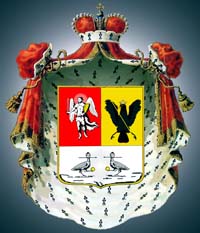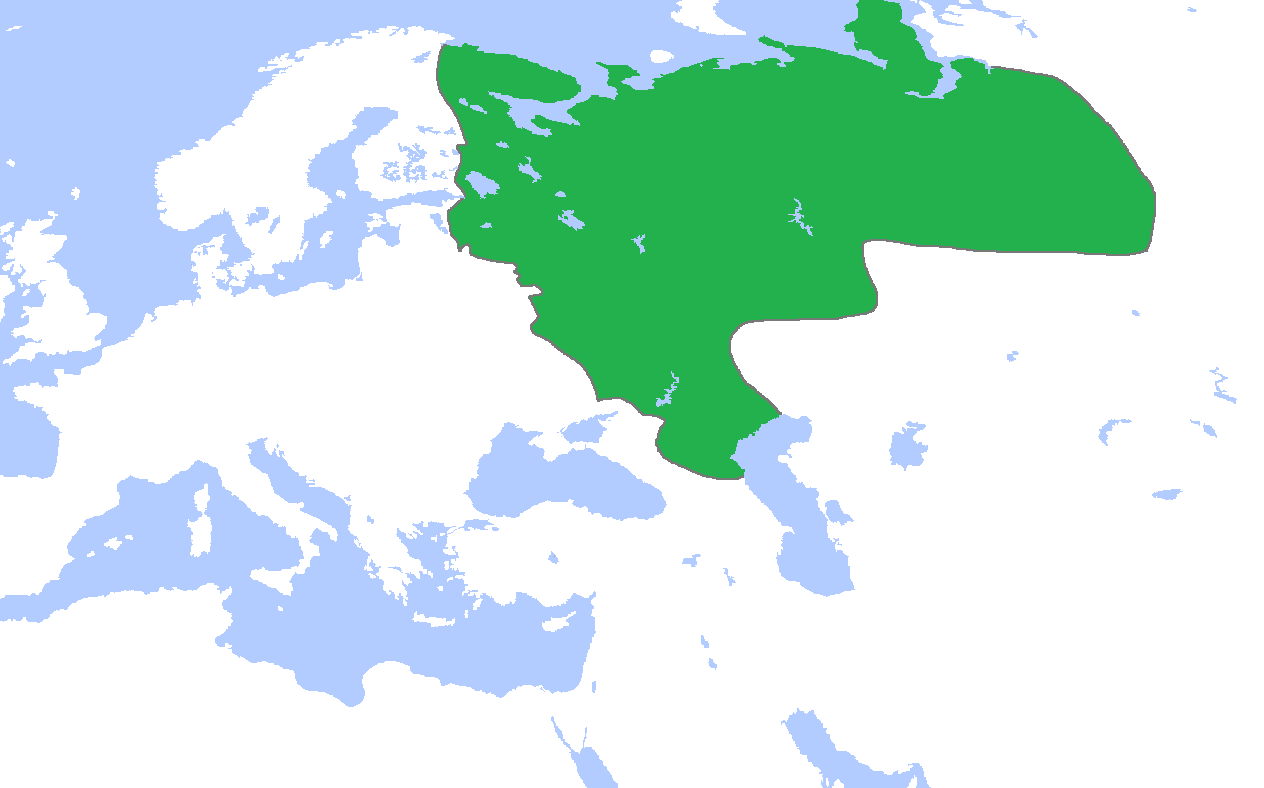|
Epiphany Monastery
The Epiphany Monastery (russian: Богоявленский монастырь, ''Bogoyavlensky monastyr''; better translated as "Theophany Monastery") is the oldest male monastery in Moscow, situated in the Kitai gorod, just one block away from the Moscow Kremlin. According to a legend, it was founded by Daniel, the first prince of Moscow, around 1296. It is also believed that a would-be metropolitan Alexis was one of the monks at this monastery. Stefan, Sergii Radonezhski's older brother, was the first recorded hegumen of this cloister. The first stone church at the Bogoyavlensky monastery was founded in 1342. In 1382, the monastery was sacked by Tokhtamysh's horde. In 1427, it suffered an outbreak of pestilence. The monastery also survived numerous fires, the most important being recorded in 1547, 1551, 1687 and 1737. The Epiphany monastery has always been under the patronage of grand princes and tsars. By the order of Ivan the Terrible, the monastery became a collection ... [...More Info...] [...Related Items...] OR: [Wikipedia] [Google] [Baidu] |
Moscow 05-2017 Img33 Kitay-Gorod
Moscow ( , American English, US chiefly ; rus, links=no, Москва, r=Moskva, p=mɐskˈva, a=Москва.ogg) is the Capital city, capital and List of cities and towns in Russia by population, largest city of Russia. The city stands on the Moskva (river), Moskva River in Central Russia, with a population estimated at 13.0 million residents within the city limits, over 17 million residents in the urban area, and over 21.5 million residents in the Moscow metropolitan area, metropolitan area. The city covers an area of , while the urban area covers , and the metropolitan area covers over . Moscow is among the List of largest cities, world's largest cities; being the List of European cities by population within city limits, most populous city entirely in Europe, the largest List of urban areas in Europe, urban and List of metropolitan areas in Europe, metropolitan area in Europe, and the largest city by land area on the European continent. First documented in 1147, Moscow gre ... [...More Info...] [...Related Items...] OR: [Wikipedia] [Google] [Baidu] |
Grand Prince
Grand prince or great prince (feminine: grand princess or great princess) ( la, magnus princeps; Greek: ''megas archon''; russian: великий князь, velikiy knyaz) is a title of nobility ranked in honour below emperor, equal of king or archduke and above a sovereign prince. Grand duke is the usual and established, though not literal, translation of these terms in English and Romance languages, which do not normally use separate words for a "prince" who reigns as a monarch (e.g., Albert II, Prince of Monaco) and a "prince" who does not reign, but belongs to a monarch's family (e.g., Prince George of Wales). Some Slavic (Królewicz), Germanic, Dutch, and Scandinavian languages do use separate words to express this concept, and in those languages ''grand prince'' is understood as a distinct title (for a cadet of a dynasty) from ''grand duke'' (hereditary ruler ranking below a king). Some recent sources also use Archduke. The title of ''grand prince'' was once used for the ... [...More Info...] [...Related Items...] OR: [Wikipedia] [Google] [Baidu] |
Repnin
The House of Repnin (russian: Репнин), the name of an old Russian princely family of Rurikid stock. The family traces its name to Prince Ivan Mikhailovich Obolensky (+1523), nicknamed ''Repnya'', i.e., "bad porridge". Like other Princes Obolensky, he descended from Mikhail Vsevolodovich, prince of Chernigov, who, in 1246, was assassinated by the Mongols. Notable members of the family include: *Princess Elena Mikhailovna Repnina ( ru) was the first wife of future tsar Vasily Shuisky. The date of marriage is unknown, although they are mentioned together in 1580 as the witnesses in the description of Ivan IV's wedding with Maria Nagaya. She had no children and died possibly in 1592, hypothetically - as the divorced woman in the monastery. The information about her is quite poor.Репнин М. И. Князья Репнины в истории Отечества. М.2009. С.44 Her grave is unknown. Only in 1608 Vasily took the 2nd wife Maria Buynosova-Rostovskaya who become h ... [...More Info...] [...Related Items...] OR: [Wikipedia] [Google] [Baidu] |
Boyar
A boyar or bolyar was a member of the highest rank of the Feudalism, feudal nobility in many Eastern European states, including Kievan Rus', Bulgarian Empire, Bulgaria, Russian nobility, Russia, Boyars of Moldavia and Wallachia, Wallachia and Moldavia, and later Romania, Lithuanian nobility, Lithuania and among Baltic German nobility, Baltic Germans. Boyars were second only to the ruling knyaz, princes (in Bulgaria, tsars) from the 10th century to the 17th century. The rank has lived on as a surname in Russia, Finland, Lithuania and Latvia where it is spelled ''Pajari'' or ''Bajārs/-e''. Etymology Also known as bolyar; variants in other languages include bg, боляр or ; rus, боя́рин, r=boyarin, p=bɐˈjærʲɪn; ; ro, boier, ; and el, βογιάρος. The title Boila is predecessor or old form of the title Bolyar (the Bulgarian language, Bulgarian word for Boyar). Boila was a title worn by some of the Bulgars, Bulgar aristocrats (mostly of regional governors a ... [...More Info...] [...Related Items...] OR: [Wikipedia] [Google] [Baidu] |
Romodanovsky (family)
The House of Romodanovsky (russian: Ромодановские) was a Rurikid princely family descending from sovereign rulers of Starodub-on-the-Klyazma. Their progenitor was Prince Vasily Fyodorovich Starodubsky (Василий Фёдорович Стародубский) who changed his name to Romodanovsky after the village of Romodanovo where he lived in. Although the family was one of the first Rurikids to enter the service of the Grand Duke of Muscovy, it was in the 17th century that they finally rose to the highest offices of Muscovite Russia. Early members Among Vasily's sons, one was Ivan III's okolnichi, another sat in the Boyar Duma during Vasily III's reign. Their nephew was sent by Ivan the Terrible as a Russian ambassador to Copenhagen. The latter's nephew, Prince Ivan Petrovich Romodanovsky, was killed by the Kalmucks on his way from Persia in 1607. Since the 17th century, the family was divided into senior and cadet lines, both of which benefited from ... [...More Info...] [...Related Items...] OR: [Wikipedia] [Google] [Baidu] |
Boris Godunov
Borís Fyodorovich Godunóv (; russian: Борис Фёдорович Годунов; 1552 ) ruled the Tsardom of Russia as ''de facto'' regent from c. 1585 to 1598 and then as the first non-Rurikid tsar from 1598 to 1605. After the end of his reign, Russia descended into the Time of Troubles. Early years Boris Godunov was the most noted member of an ancient, now extinct, Russian family of Tatar origin ( Chet), which came from the Horde to Kostroma in the early 14th century. This cites: * Platon Vasilievich Pavlov, ''On the Historical Significance of the Reign of Boris Godunov'' (Rus.) (Moscow, 1850) * Sergyei Mikhailivich Solovev, ''History of Russia'' (Rus.) (2nd ed., vols. vii–viii., St Petersburg, 1897). This legend is written in the annals dating from early 17th century. He was descended from the Tatar Prince Chet, who went from the Golden Horde to Russia and founded the Ipatiev Monastery in Kostroma. Boris was probably born before or after the Kazan campaign. Boris was ... [...More Info...] [...Related Items...] OR: [Wikipedia] [Google] [Baidu] |
Vasili III
Vasili III Ivanovich (russian: Василий III Иванович, 25 March 14793 December 1533) was the Grand Prince of Moscow from 1505 to 1533. He was the son of Ivan III Vasiliyevich and Sophia Paleologue and was christened with the name Gavriil (Гавриил). He had three brothers: Yuri, born in 1480, Simeon, born in 1487 and Andrei, born in 1490, as well as five sisters: Elena (born and died in 1474), Feodosiya (born and died in 1475), another Elena (born 1476), another Feodosiya (born 1485) and Eudoxia (born 1492). He is sometimes mockingly referred to as Vasili the Adequate due to his rule taking place between those of Ivan the Great and his son Ivan the Terrible, as well as the relative uneventfulness of his reign. Foreign affairs Vasili III continued the policies of his father Ivan III and spent most of his reign consolidating Ivan's gains. Vasili annexed the last surviving autonomous provinces: Pskov in 1510, appanage of Volokolamsk in 1513, principalities of ... [...More Info...] [...Related Items...] OR: [Wikipedia] [Google] [Baidu] |
Moscow Bogoyavlensky Asv2021-07 Img3
Moscow ( , US chiefly ; rus, links=no, Москва, r=Moskva, p=mɐskˈva, a=Москва.ogg) is the capital and largest city of Russia. The city stands on the Moskva River in Central Russia, with a population estimated at 13.0 million residents within the city limits, over 17 million residents in the urban area, and over 21.5 million residents in the metropolitan area. The city covers an area of , while the urban area covers , and the metropolitan area covers over . Moscow is among the world's largest cities; being the most populous city entirely in Europe, the largest urban and metropolitan area in Europe, and the largest city by land area on the European continent. First documented in 1147, Moscow grew to become a prosperous and powerful city that served as the capital of the Grand Duchy that bears its name. When the Grand Duchy of Moscow evolved into the Tsardom of Russia, Moscow remained the political and economic center for most of the Tsardom's history. When the Ts ... [...More Info...] [...Related Items...] OR: [Wikipedia] [Google] [Baidu] |


_-_contrast.jpg)


